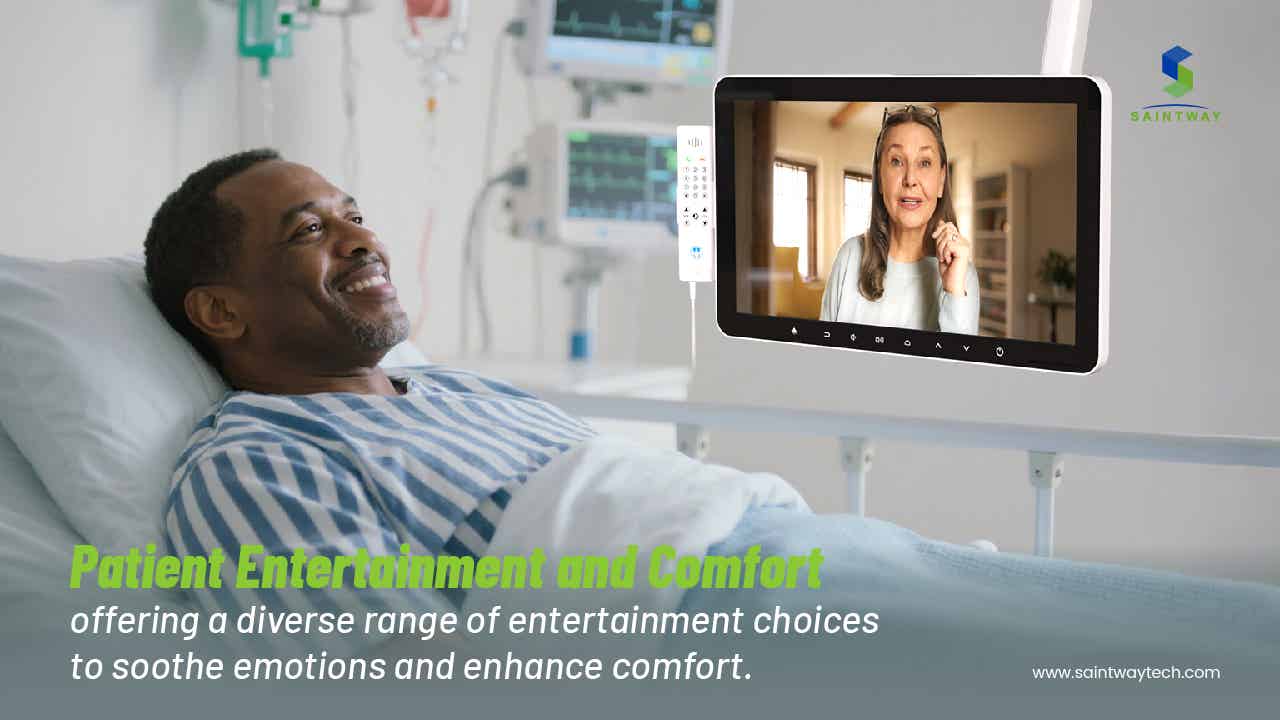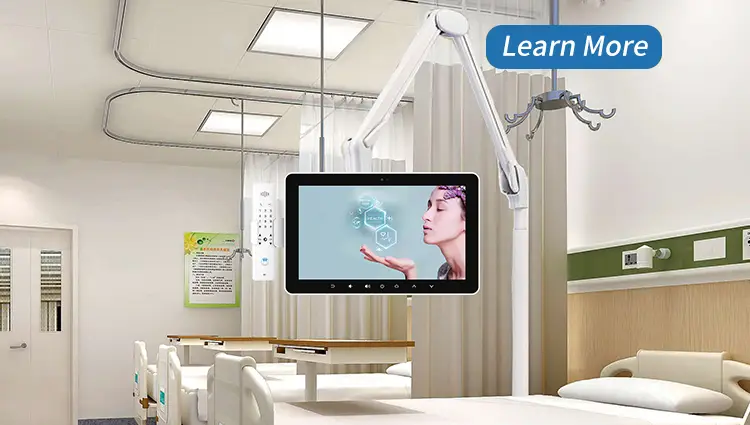Touch screens are everywhere. You tap your phone to scroll through apps, swipe on a tablet to draw, or press buttons on a car’s display to adjust the music. These simple actions rely on complex tech from top touch screen manufacturers that make interactions smooth and reliable.
The supply chain for these panels is tricky. It involves layers of glass, sensors, and software that work together. Picking the right manufacturer matters a lot. They don’t just build glass; they add sensors, controllers, and tough coverings to protect against scratches and spills. This sets up our look at the big players in the field.

The Landscape of Touch Screen Technology: Key Manufacturing Processes
Capacitive vs. Resistive Technologies: Market Dominance and Application
Capacitive touch screens use your finger’s electrical charge to detect touches. They respond to light taps and multi-finger gestures. Resistive ones need pressure to connect layers, so they feel older and less sensitive.
Projected capacitive, or PCAP, rules the market now. It holds about 85% of the share in consumer gadgets, based on reports from firms like Display Supply Chain Consultants. That’s because PCAP works well with wet fingers or in bright light, which suits phones and laptops.
Resistive tech hangs on in tough spots. Think factory machines where workers wear thick gloves, or medical tools that need to handle chemicals. These setups favor resistive for its low cost and simple design.
Sensor Materials and Fabrication Techniques
Sensors in touch screens catch your touches. Common material is Indium Tin Oxide, or ITO, which lets light pass through while conducting electricity. But ITO costs a lot, so makers seek options like silver nanowires or metal mesh for better flexibility.
Fabrication starts with coating glass in these materials. Then photolithography etches patterns to form the grid that senses touches. Etching ensures the lines are thin, so the screen stays clear.
For flexible touch panels, companies bend these layers without cracks. High-transparency touch sensors boost visibility on devices like smartwatches. This push opens doors for wearables that curve with your wrist.
- Key materials: ITO, silver nanowires, graphene.
- Methods: Photolithography, laser etching.
- Benefits: Thinner designs, lower power use.
Integration and Assembly: From Panel to Module
After making the touch layer, it’s time to join it with the display. Optical bonding glues the touch panel right to the screen with clear adhesive. This cuts glare and boosts touch accuracy compared to the old air gap method.
Assembly demands clean rooms to avoid dust specks. Workers align layers precisely for even light and strong bonds. Durability comes from tests that mimic years of use.
The result is a module ready for gadgets. It handles heat, moisture, and daily taps without failing. This step turns raw parts into a full touch system you trust.
Benchmark Analysis: Leading Global Touch Screen Manufacturers
| Sector | Manufacturer | Key Description |
|---|---|---|
| Consumer Electronics | TPK Holding | Supplies Apple/Samsung; high-volume & custom. |
| Consumer Electronics | GIS | Mobile/tablet capacitive panels. |
| Consumer Electronics | Samsung Display | AMOLED for smartphones/wearables. |
| Industrial/Medical | Planar | Durable, FDA-approved rugged displays. |
| Industrial/Medical | Elo Touch | Kiosks, POS, healthcare solutions. |
| Industrial/Medical | Advantech | Embedded IoT industrial panels. |
| Industrial/Medical | Saintway | Touch Screen HOSPITAL TV |
| Automotive | Synaptics | Safety features: fingerprint, haptics. |
| Automotive | Cypress (Infineon) | Automotive infotainment controllers. |
| Automotive | Alps Alpine | Haptic vehicle interfaces. |
| Flexible Displays | BOE | Flexible/rollable tech; 2025 adoption. |
| Flexible Displays | LG Display | OLED foldable for consumer/auto. |
| Flexible Displays | Samsung Display | Foldable AMOLED pioneer. |
Giants of Consumer Electronics Touch Integration
Big names like TPK Holding and GIS lead in phones and tablets. They pump out millions of panels each year for brands such as Apple and Samsung. Their focus is on small sizes, fast response times, and edges that blend into the screen.
These firms chase trends like 120Hz refresh rates for smoother scrolls. Miniaturization lets phones get thinner without losing touch feel. You see this in flagships where the screen covers almost the whole front.
Suppliers often tie up with OEMs for custom work. While details stay secret, industry buzz points to their role in hits like foldable phones. This keeps consumer tech ahead in the race for better user experience.
Specialized Manufacturers for Industrial and Medical Sectors
Companies like Planar and Elo Touch focus on tough environments. Their panels resist chemicals and shocks for factory controls or hospital monitors. EMI shielding blocks interference from nearby machines.
Certifications matter here. Look for IP65 ratings to keep out dust and water. Medical ones need FDA approval for safe use in clinics.
To pick a good supplier, check these points:
- IP rating: At least IP54 for basic protection.
- Temperature range: Works from -20°C to 70°C.
- Touch life: Over 50 million activations.
- Custom sizes: Fits your exact setup.
These makers ensure reliability where failures cost time and money.
Automotive Touch Screen Innovators
Cars demand screens that shine in sunlight and endure hot summers or cold winters. Firms like Synaptics and Cypress craft panels with anti-glare coatings and wide viewing angles. Multi-touch lets drivers pinch to zoom maps or swipe for climate control.
Designs now curve with dashboards for a sleek look. Borderless edges make interfaces feel modern. Gesture support adds safety by keeping eyes on the road.
The auto display market will grow to $50 billion by 2027, per Statista data. This boom pushes makers to innovate for electric vehicles and self-driving tech. Touch becomes the main way you interact with your ride.
Cutting-Edge Trends Driving Manufacturer Investment
The Rise of Flexible and Rollable Displays
Flexible screens bend and fold, thanks to new touch layers. Makers like BOE and LG Display layer sensors on plastic instead of glass. This allows phones that unfold into tablets or TVs that roll up like posters.
OLED pairs well with these for vibrant colors and thin builds. Mass rollout could hit by 2025, say analysts at Omdia. It changes how we use devices, from wrist wraps to giant walls.
Challenges include keeping touch accurate on curves. But progress means more options for you in gadgets that fit your life.
Enhancing Security and Sensing Capabilities
Security builds into touch screens now. Under-display fingerprint readers hide sensors beneath the glass for a clean look. Haptics add vibrations to confirm taps, like a buzz on your smartwatch.
Cyber threats grow, so makers add encryption to touch data. This stops hackers from stealing inputs on ATMs or phones. You feel safer with these built-in guards.
Advanced sensing detects pressure levels for 3D touches. It mimics real buttons without the bulk. This trend makes interfaces smarter and more secure.
Sustainability and Material Science in Manufacturing
ITO supply runs short, so firms switch to eco-friendly picks. Silver nanowires use less rare earths and recycle easier. Metal mesh cuts waste in production.
Makers track sourcing to avoid conflict minerals. This meets rules from groups like the EU. You can ask suppliers for reports on their green practices.
For OEMs, push for clear supply chains. Demand audits on materials to ensure ethical builds. This helps the planet and your brand’s image.
- Alternatives to ITO: Carbon nanotubes, conductive polymers.
- Green perks: Lower energy in making, longer life.
- Tip: Choose partners with ISO 14001 for environment standards.
Key Factors for Evaluating Touch Screen Manufacturers
Quality Control, Yield Rates, and Reliability Testing
Good makers test every panel hard. Cycle tests tap millions of times to check wear. Drop tests see if it survives falls from desk height.
High yields mean fewer defects, so costs drop for you. Aim for over 95% good panels from top firms. This saves money on big orders.
Look for ISO 9001 certification as a quality stamp. It proves they follow strict rules. Touch panel reliability standards like IEC tests ensure long life in real use.
Supply Chain Resilience and Scalability
Global issues like chip shortages hit hard. Strong suppliers have backups for parts like glass or chips. Dual sourcing keeps production going.
Scalability lets them ramp up for your growth. From prototypes to millions, they adapt fast. This matters in fast markets like EVs.
Ask about their network. Do they have plants in multiple countries? This cuts risks from one area’s problems.
Customization Capabilities and NRE Investment
Off-the-shelf panels work for basics. But custom needs call for makers who design ASICs or shape glass uniquely. Think odd ratios for kiosks or special coatings for outdoors.
NRE, or non-recurring engineering, covers upfront costs for tweaks. Top firms invest here for loyal clients. You get panels that fit your product perfectly.
Weigh standard vs. custom: Standards save cash quick; custom boosts your edge. Pick based on your goals.

Conclusion: The Future Interface Depends on Manufacturing Excellence
Top touch screen manufacturers shape how we connect with tech. From consumer hits to industrial tools, their work drives smooth, tough interfaces. We’ve seen the tech basics, key players, trends, and pick tips.
Quality, supply strength, and custom options stand out. They ensure devices last and perform. The blend of sensors, displays, and software points to wild futures—like always-on health checks via touch.
Choose wisely to boost your product’s success. Ready to find the right partner? Start by reviewing those checklists and reaching out to leaders today.

